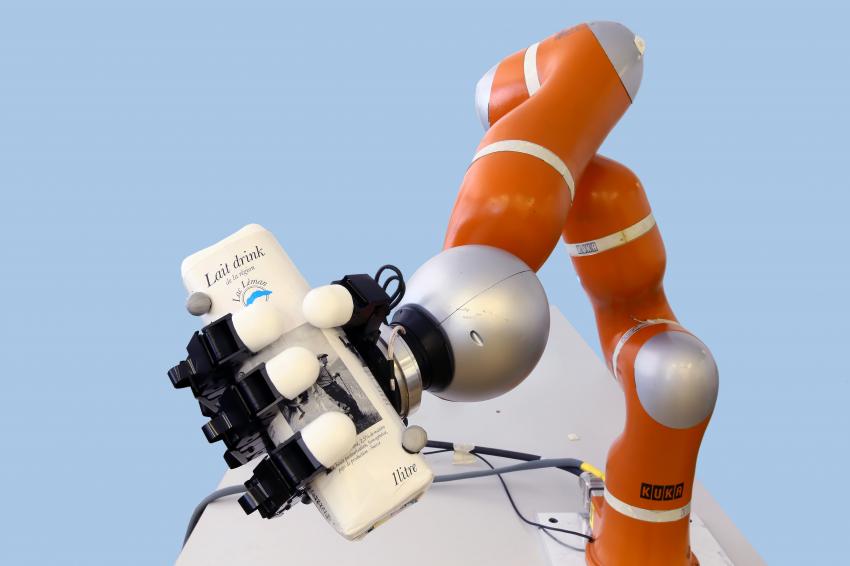Bionic hand that catches objects on the fly

A robotic arm developed by a team of researchers from EPFL is capable of catching objects of various shapes flying along different paths.
Here he stands motionless with his palm open, and a moment later, he suddenly spins up and catches all kinds of flying objects thrown in his direction, starting with a tennis racket and ending with a ball. The arm consists of three joints and four fingers, with a total length of about 1.5 meters. The programming of this robot was carried out by the EPFL laboratory - LASA (Learning Algorithms and Systems Laboratory) . It is unique in that it is capable of catching objects of various irregular shapes, while making a decision in less than 0.05 seconds.
More and more robots are present in our daily lives to perform various tasks, and with the ability to catch an object or dodge complex objects while moving, they can become even more mobile and perform even more functions. - says Aude Billard, head of LASA
This manipulator already has a real possibility of application in space. This is directly related to the project of the Swiss Space Center in the EPFL , whose goal is to develop technologies for the disposal of space debris in orbit around the Earth. Such a hand, built into the satellite, while observing flying objects in space, is capable of catching flying debris.
Nowadays, machines are basically unable to quickly learn data changes. Therefore, their choice is to recalculate the trajectory, which takes too long for them in a situation where every fraction of a second can be decisive. - added Aude Billard, head of LASA
In order to get the expected speed of reaction and adaptability, LASA employees began to apply a method similar to the trial and error method, called Programming by demonstration . The hand in this case is sent manually, repeating the movements that should occur when catching objects.
An experiment was conducted on catching a ball, an empty bottle, a half full bottle, a hammer and a tennis racket. These five different objects were chosen because they offer a diverse range of situations where the part of the object that the robot must catch (for example, the racket handle) does not correspond to its center of gravity. In the case of a bottle, an additional problem appears, since its center of gravity moves several times during its flight.
At the first stage of the experiment, objects were thrown several times in the direction of the robot. Through a series of cameras located around the robot, he creates a model of a flying object and calculates its flight path, speed and rotational motion. Scientists were able to translate everything into an equation that allows the robot to select a position very quickly in the right direction. Within just a few milliseconds, the robotic arm refines and adjusts the trajectory of the object in real time and catches it with high accuracy.
